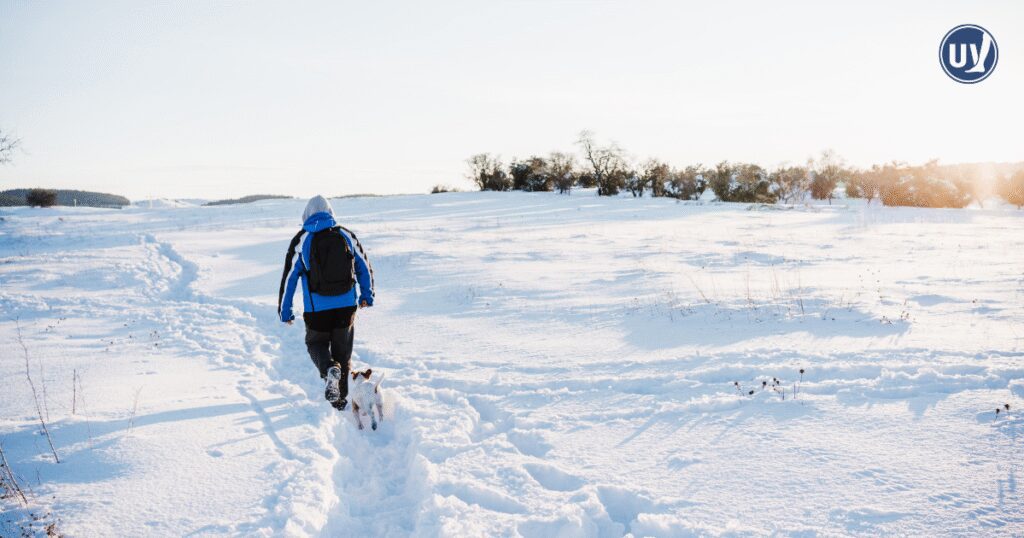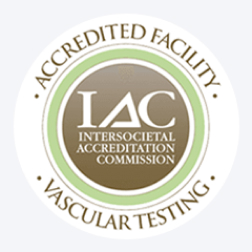Winter brings more than chilly winds and shorter days, it can pose real challenges for your veins, circulation, and skin. As temperatures drop, blood vessels constrict, reducing blood flow and making it harder for your body to stay warm. For those with vein and vascular conditions, like varicose veins or chronic venous insufficiency, this can mean increased discomfort and a higher risk of complications.
The cold also dries out skin, leading to cracks and wounds that heal slowly. Reduced circulation combined with fragile skin makes proactive winter care essential. By understanding how cold weather affects your body, you can take practical steps to protect your skin, support healthy circulation, and prevent complications, keeping you comfortable and safe all season long.
Essential Tips for Winter Skin Protection
Moisturize Regularly
Cold air and indoor heating can strip your skin of its natural moisture, leaving it dry and more prone to damage. To combat this, apply a rich, hydrating moisturizer daily. Look for products containing ingredients like hyaluronic acid or glycerin, which help lock in moisture. Apply after bathing and before bed to keep your skin supple and protected.
Additionally, consider using an oil-based moisturizer for a stronger barrier against moisture loss during particularly harsh weather conditions.
Establishing a routine that incorporates moisturizing throughout the day can further enhance your skin’s resilience. Keep a travel-sized moisturizer handy for when you’re on the go, ensuring your skin stays hydrated even in fluctuating temperatures. Remember, consistency is key; regular application can significantly improve your skin’s texture and defense against the elements.
Stay Hydrated
Hydration is just as important in winter as it is in summer. Drinking plenty of water helps maintain your skin’s moisture from the inside out. Aim for at least eight glasses a day, and consider herbal teas as a warming alternative that also provides hydration. Soups and broths can also contribute to your daily fluid intake while offering a comforting warmth on cold days.
In addition to water and teas, incorporate hydrating foods like cucumbers, oranges, and berries into your diet. These not only provide hydration but are also packed with essential vitamins and antioxidants that benefit your skin’s health. Keeping your body well-hydrated supports overall circulation, aiding in the efficient transport of nutrients to your skin cells.
Dress in Layers
Dressing in layers not only helps keep you warm but also allows you to adjust your attire as needed to avoid overheating. Choose breathable fabrics like cotton or moisture-wicking materials for the layer closest to your skin to prevent irritation and maintain comfort. These fabrics help regulate your body temperature while wicking away moisture that could lead to irritation or chills.
Layering effectively can also serve as a barrier against the cold, preventing rapid heat loss. Start with a base layer that fits snugly, add a middle layer for insulation, and finish with a windproof or waterproof outer layer. This strategy allows you to adapt to changing weather conditions, ensuring you remain comfortable without compromising circulation.
Protect Your Extremities
Your hands, feet, and ears are particularly vulnerable to the cold. Wear gloves, warm socks, and a hat to shield these areas from the chill. Consider investing in thermal or insulated options for added protection. These extremities are prone to rapid heat loss, and keeping them covered can prevent frostbite and maintain circulation.
In addition to clothing, regularly check these areas for signs of dryness or irritation, applying a protective balm or cream as needed. This proactive care can help maintain skin integrity and prevent small issues from becoming problematic. Remember, prevention is better than cure, especially when it comes to protecting vulnerable areas of your body.
Boosting Circulation in Cold Weather
Stay Active
Physical activity promotes healthy circulation, helping to keep your blood flowing efficiently. Aim for at least 30 minutes of moderate exercise most days of the week. Even indoor activities like walking in place or using a stationary bike can be beneficial when it’s too cold to go outside. Incorporating stretching or yoga can also enhance circulation and flexibility, providing a gentle way to stay active indoors.

Consider taking up winter sports like skiing or ice skating if you’re comfortable in the cold. These activities can provide both cardiovascular benefits and a fun way to enjoy the winter landscape. Staying active not only boosts your circulation but also releases endorphins, improving your mood during the darker winter months.
Elevate Your Legs
If you experience swelling or discomfort in your legs, try elevating them whenever possible. This simple action can help reduce swelling and improve blood flow. Use a pillow or a specialized leg wedge when sitting or lying down. Elevating your legs above heart level is particularly effective, as it encourages blood to flow back towards the heart, alleviating pressure.
Consider incorporating leg elevation into your daily routine, such as during breaks at work or while watching TV at home. This small adjustment can make a significant difference in managing symptoms associated with poor circulation. Consistency in this practice can lead to long-term benefits in reducing discomfort and improving vascular health.
Avoid Prolonged Sitting or Standing
Extended periods of sitting or standing can exacerbate vein and vascular symptoms. Take regular breaks to move around and stretch, especially if you have a desk job or need to stand for long periods. This can help prevent blood from pooling in your lower extremities. Simple exercises like calf raises or ankle circles can be done discreetly throughout the day to encourage circulation.
If your work environment limits mobility, consider using a standing desk or a footrest to change positions frequently. These adjustments can relieve pressure on your veins and promote better blood flow. Being mindful of your posture and movement habits plays a crucial role in maintaining optimal circulation during the winter months.
Wear Compression Garments
Compression stockings or sleeves can provide support for your veins and improve circulation. These garments apply gentle pressure to your legs, reducing swelling and discomfort. Consult your healthcare provider for recommendations on the right type and fit for your needs. Wearing these garments regularly can significantly alleviate symptoms and improve your quality of life.
When selecting compression garments, pay attention to the level of compression and material to ensure comfort and effectiveness. Properly fitted compression wear can be a valuable tool in managing vein and vascular conditions, especially during the colder months when circulation may be further compromised.
Winter Wound Care for Healthy Skin
Treat Wounds Promptly
If you notice any cuts, cracks, or sores on your skin, address them immediately. Cleanse the area with mild soap and water, apply an antibacterial ointment, and cover with a sterile bandage. Monitor the wound for signs of infection, such as redness, swelling, or pus, and seek medical attention if necessary. Early intervention can prevent small wounds from developing into serious issues.
In addition to treating wounds promptly, make it a habit to inspect your skin regularly for any changes. This proactive approach allows you to catch potential problems early, ensuring they are managed before complications arise. Keeping a well-stocked first aid kit at home with essential supplies can also facilitate swift treatment when needed.
Avoid Hot Showers
While a hot shower may feel comforting on a cold day, it can further dry out your skin. Opt for lukewarm water instead, and limit your shower time to avoid stripping your skin of its natural oils. Consider using a moisturizing body wash to add an extra layer of hydration during your shower routine.
After showering, gently pat your skin dry with a soft towel and apply moisturizer immediately to lock in moisture. This practice helps maintain your skin’s barrier function, preventing further dryness and irritation. Adopting these habits can significantly enhance your skin’s resilience against winter’s drying effects.
Use a Humidifier
Indoor heating can create a dry environment that affects your skin’s moisture levels. Using a humidifier adds moisture to the air, helping to keep your skin hydrated. Place one in your bedroom or any room where you spend a lot of time. Regularly clean and maintain your humidifier to ensure it functions optimally and remains free from mold or bacteria.
In addition to improving skin hydration, a humidifier can benefit your respiratory health, reducing issues like dry throat or nasal passages. Consider combining a humidifier with air-purifying plants to further enhance your indoor environment. This holistic approach supports both your skin and overall well-being during the winter months.
When to Seek Professional Care
While many winter skin and circulation issues can be managed at home, it’s important to know when to seek professional care. If you notice persistent swelling, pain, or changes in your skin that don’t improve with home care, consult a healthcare professional. They can provide a comprehensive evaluation and recommend appropriate treatments to address your specific needs. Early intervention by a professional can prevent complications and ensure effective management of your condition.
It’s also wise to schedule regular check-ups with your healthcare provider, especially if you have pre-existing vein or vascular conditions. These appointments allow for ongoing monitoring and adjustments to your care plan as needed. Being proactive in seeking professional care can make a significant difference in managing your health during the winter months.
Embracing a Holistic Approach
Taking a holistic approach to winter wound care means considering both the physical and mental aspects of your health. Stress can negatively impact your circulation and skin health, so incorporating stress-reducing practices such as meditation, yoga, or deep breathing exercises can be beneficial. These practices help to calm the mind and improve blood flow, enhancing overall well-being.
Furthermore, maintaining a balanced diet rich in vitamins and minerals supports your skin and vascular health. Foods high in antioxidants, like berries and leafy greens, can help protect your skin and improve circulation. Incorporating omega-3 fatty acids from sources like fish or flaxseeds can also support vascular function and reduce inflammation.
Stay Healthy and Comfortable All Winter Long
Cold weather can take a toll on your veins and circulation, but with the right care, you can protect your skin and overall vascular health throughout the season. Paying attention to your body, practicing preventive strategies, and seeking guidance early can help prevent complications and keep you comfortable all winter long.
At United Vein & Vascular Centers, our team is here to support you with expert advice and personalized care. Schedule a consultation today and take proactive steps to keep your circulation strong and your skin healthy this winter.
Frequently Asked Questions
Cold temperatures cause blood vessels to constrict, reducing blood flow. This can worsen symptoms for individuals with vein or vascular conditions, increasing discomfort and the risk of complications.
Maintaining proper skin hydration, avoiding harsh soaps, protecting skin from extreme cold, and monitoring for any signs of cracks or slow-healing wounds are key steps in preventing winter skin injuries.
If you notice persistent pain, swelling, open wounds, or slow-healing skin, it’s important to consult a vascular specialist. Early intervention helps prevent complications and supports overall skin and circulation health.


